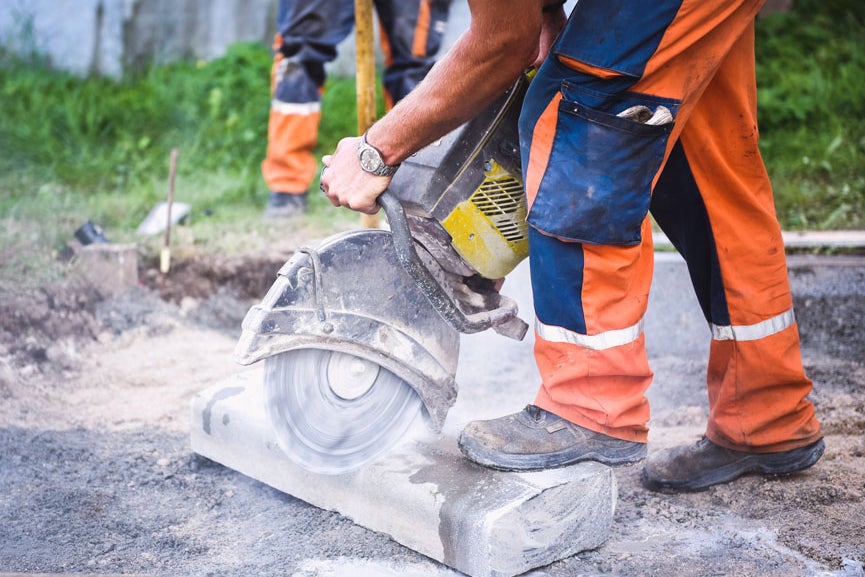Workplace cancer
Reduce the cancer risks for you and your workers

Occupational cancers are those that occur due to exposure to carcinogenic (cancer-causing) agents in the workplace. Such exposures include:
- a wide range of different industrial chemicals, dusts, metals and combustion products (e.g. asbestos or diesel engine exhaust)
- forms of radiation (e.g. ultraviolet or ionising radiation)
- entire professions and industries (e.g. working as a painter, or in aluminium production)
- patterns of behaviour (e.g. shift working).
Occupational exposures to carcinogens are estimated to cause over 5000 new cases of cancer in Australia each year.
The International Agency for Research on Cancer (IARC) has identified over 165 cancer-causing agents that workers are potentially being exposed to in their workplace. A study in 2012 considered 38 of these agents of high priority and specific to Australian workplaces. The list can be found in the Occupational Exposures to Carcinogens in Australia monograph, page 3.
Occupational groups where exposure was greatest included farmers, drivers, miners and transport workers. Exposures reported for men compared to those reported for women showed that a much higher proportion of males were exposed to one or more carcinogens at work, particularly those who hold a trade and are residing in regional areas.
Sign up here
Prevention is better than a cure
Putting in place control measures for carcinogenic hazards is the only way to reduce your cancer risk at work. Therefore, you should always follow the outlined safe work practices at your workplace.
Cancer Council has developed fact sheets about various occupational carcinogens, designed for both employers and employees. They provide information about some workplace cancer risks, how you can control them, legal obligations and where you can go for more information.
If you are concerned about possible cancer-causing agents in your workplace please contact Cancer Council 13 11 20. If you know someone who might be exposed to a carcinogen at work, please share this page with them.
Workplace cancer stories
Wayne's story
There are many challenges in linking work to cancer. One of those challenges is the long-time gap between a particular exposure and a cancer diagnosis.
Wayne Higgs was diagnosed with maxillary cancer, which may have been caused by a glue he used in his work environment.
Wayne Higgs
Graham's story
Working as an electrician, Graham Jenkins used to do a lot of welding jobs with no control measures in place. The UV produced from welding has likely contributed to numerous squamous cell carcinomas and basal cell carcinomas on his arms, chest and legs. Graham was also not aware that the welding fume produced was also a group one cancer-causing agent.
Graham Jenkins
Other useful websites
Specific work health and safety laws by state and territory:
legislation.gov.au
legislation.act.gov.au
legislation.nsw.gov.au
legislation.nt.gov.au
legislation.qld.gov.au
legislation.sa.gov.au
legislation.tas.gov.au
legislation.vic.gov.au
legislation.wa.gov.au
For further international information and free resources on workplace carcinogens including solar UV radiation, diesel engine exhaust, silica dust and asbestos please visit the Institution of Occupational Safety and Health's Preventing Occupational Cancer webpage.
Sources
- Fritschi, L. and T. Driscoll. Cancer due to occupation in Australia. J Public Health. 2006;30:213-219.
- Carey, R.N., et al. Estimated prevalence of exposure to occupational carcinogens in Australia (2011-2012). Occup Environ Med. 2014;71(1):55-62
- International Agency for Research on Cancer. Monographs on the evaluation of carcinogenic risks to humans. Lyon, France: IARC World Health Organisation; 2013.
- Fernandez, R.C. Driscoll, T.R. Glass, D.C. Vallance, D. Reid, A., Benke, G., et al. A priority list of occupational carcinogenic agents for preventative action in Australia. Aust NZ J Public Health. 2012;36:111-115.
- Safe Work Australia. How to manage work health and safety risks – Code of Practice. Canberra, ACT: Safe Work Australia; 2011.
This content has been developed by Cancer Council Australia's Occupational and Environmental Cancer Committee.
Learn more about reducing your cancer risk
